
Guwahati: North East India’s first NABL-accredited textile testing laboratory, located at the North Eastern Handicrafts and Handlooms Development Corporation (NEHHDC) Head Office in Garchuk, Guwahati, has opened its doors. This state-of-the-art facility, managed by a dedicated team of seven local professionals, has made a significant impact by approving over forty weavers within its first four days. NEHHDC Managing Director, Brig. R.K. Singh, highlighted in an interview with Pankhi Sarma of Business North East that the lab is a major technological advancement and a vital step in preserving the region's weaving heritage. It ensures the authenticity and quality of products, including the GI-tagged gamosa.
.jpeg)
In this interview, the MD further sheds light on the other transformative initiatives by NEHHDC to bolster the textile industry of NorthEast.
Here are the excerpts:
Business North East (BNE): Congratulations on NEHHDC’s recent NABL accreditation. Can you explain its significance and impact on Northeast India's textile and handloom industry?
NEHHDC MD, Brig. R.K. Singh: Thank you. The NABL accreditation marks a crucial milestone for NEHHDC and the textile sector in Northeast India. Historically, the region lacked accredited testing labs, hindering access to national and international markets due to the low credibility of non-accredited test reports.
Achieving NABL accreditation was a year-long process, but it ensures our testing facility meets the highest standards, providing certification with both national and international recognition. This is vital for artisans and manufacturers aiming to enter broader markets. NABL’s affiliation with ILAC (International Laboratory Accreditation Cooperation) and APLAC (Asia Pacific Laboratory Accreditation Cooperation) ensures our test reports are accepted globally, including in Western markets and Asia-Pacific regions.
Securing NABL accreditation has been a challenging journey, taking us nearly a year to achieve. However, it was a necessary step to ensure that our products meet the highest standards. With this accreditation, we now offer a testing facility that can provide certification with national and international credibility. This accreditation opens doors for artisans and manufacturers to engage in international trade fairs, secure export deals, and attract investment, enhancing the region's economic growth and product branding on a global scale.
BNE: Have you established any specific standards or benchmarks in the laboratory, or are they aligned with national standards?NEHHDC MD: Yes, the standards we follow are indeed rigorous and aligned with national and international benchmarks. Our NABL accreditation is based on stringent ISO requirements, which are crucial for ensuring the quality and precision of our testing processes. This accreditation is not a one-time achievement but an ongoing commitment to upholding these standards.
Our laboratory complies with specific ISO standards for testing and calibration labs, which is vital for retaining NABL accreditation. This ensures that every test we perform is reliable and meets high benchmarks expected by both national and international clients.
We offer a range of tests tailored to our clients' needs, including:
• Color Fastness: Evaluates the durability of fabric colors under various conditions such as washing or exposure to light.
• Tensile Strength: Measures the amount of force a fabric can withstand before breaking.
• Yarn Break Point: Determines the maximum load a yarn can bear before it breaks.
• Fabric Resilience: Assesses how well the fabric returns to its original shape after being stretched or compressed.
• Environmental Testing: Simulates prolonged exposure to sunlight and other environmental conditions to gauge product durability.
Our laboratory is equipped to handle various testing methodologies, including physical property tests like fabric thickness measurements, and chemical analyses such as detecting harmful substances in dyes. This comprehensive testing capability ensures we provide accurate and detailed results, which are essential for clients needing to meet stringent international standards, especially those involved in exporting their products.
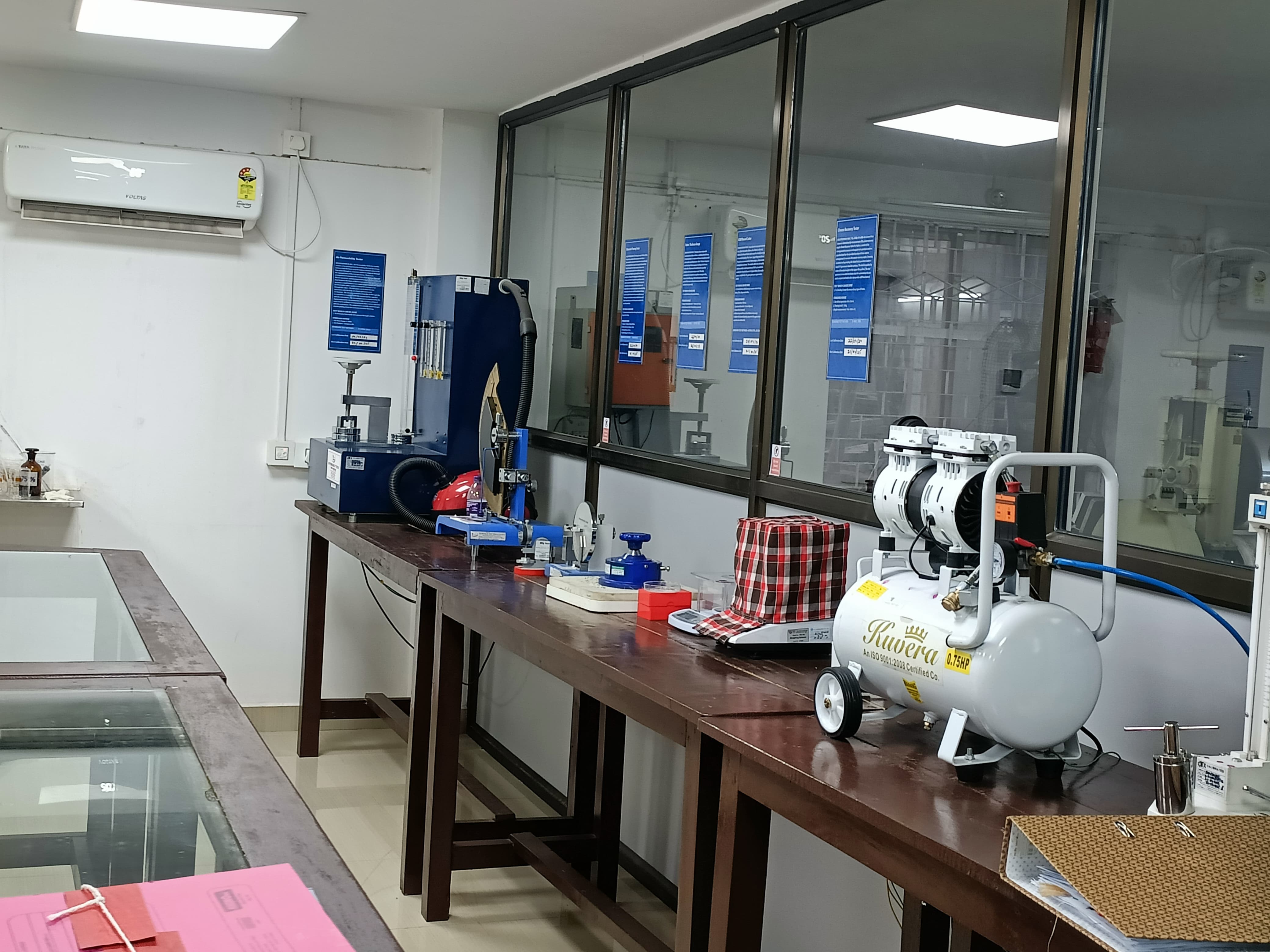 Testing labs
Testing labs
BNE: It seems that your laboratory can now test the purity of silk as well. Could you explain how this process works?
NEHHDC MD: Indeed, this is a significant development. Although it is separate from our NABL accreditation, it aligns with our role as the nodal laboratory designated by the Central Silk Board under the Ministry of Textiles, Government of India. Previously, individual silk manufacturers could obtain and affix silk marks to their products independently. However, the Central Silk Board has now centralized this process, and only NEHHDC is authorized to issue these marks.
To test the purity of silk, our laboratory conducts three types of tests:
1. Physical Test: Evaluates the physical characteristics of the silk to confirm its quality.
2. Burn Test: Assesses the fiber's behavior when burned, which helps identify the presence of synthetic fibers.
3. Chemical Test: Analyzes the silk for any chemical treatments or impurities.
After completing these tests and verifying that the silk is 100% pure, we affix the official silk mark along with a detailed test label to the product. This label includes the date and location of the test.
For added transparency, the label features a QR code. Consumers can scan this code to access a detailed report of the test results and verify the product's authenticity. They can even contact us directly for further confirmation.
This new system ensures that only authentically pure silk products receive certification, enhancing market transparency and consumer trust while preserving the integrity of silk products in the market.
BNE: Previously, our weavers had to send their products to Kolkata for testing. Now that we have a laboratory in Assam with all the necessary testing facilities, how do you think this will impact the weavers and the entire textile industry in the region?
NEHHDC MD: Before our laboratory was established, weavers had to send their products to Kolkata for testing, which was time-consuming, expensive, and often took up to two months. This added significant costs and led to higher product prices. With our new local, accredited facility, testing is now faster and cheaper. This reduction in turnaround time and costs allows weavers to offer more competitive prices and supports better quality assurance. The improved accessibility is expected to boost demand for local textiles, enhance regional competitiveness, and open new market opportunities nationally and internationally, benefiting Northeast India's textile industry significantly.
BNE: What opportunities does this new laboratory open up for the Northeast?
NEHHDC MD: The new laboratory is a transformative development for the Northeast, unlocking significant opportunities. It provides essential certification and testing, enabling our weavers and producers to confidently enter and compete in global markets. Quality assurance through accredited testing is crucial for gaining trust and accessing larger markets.
This lab is a crucial step, but it also sets the stage for future advancements. Quality and transparency are key to competing on a global scale. With this laboratory’s support, producers can showcase their adherence to recognized standards, attracting major brands like Reliance, Aditya Birla Group, and Tata, which are keen on high-quality handmade products. This certification enhances credibility and opens doors to international markets, marking a major shift in how our products are positioned globally.
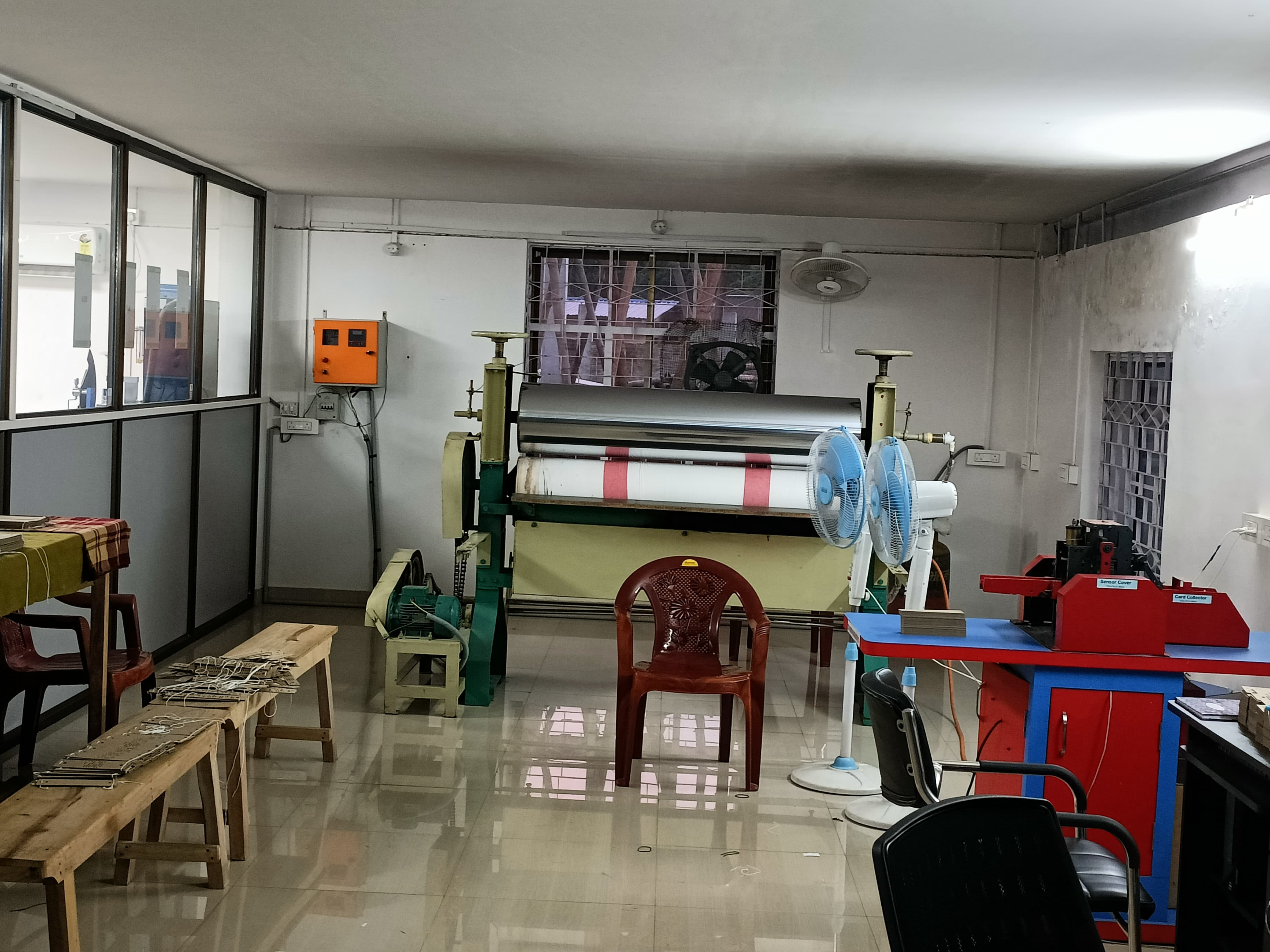 Laboratory
Laboratory
BNE: Will the new lab contribute to the revenue of the organization in any significant way?
NEHHDC MD: The primary objective of establishing this lab was to support our weavers and the textile industry by providing essential local quality testing and certification services. While the lab has achieved cost efficiencies in areas like equipment, specialized manpower, and testing chemicals, its financial impact is not substantial. The fees charged are minimal, designed to cover basic operational costs such as maintaining equipment, paying staff, and purchasing materials.
Though revenue generation is not the primary goal, the lab does offer some financial benefits. It reduces the need for outsourcing tests and certifications, which previously involved significant costs and delays. Overall, the lab’s focus is on sustainability and ensuring it provides valuable services to the industry without being a financial burden on the organization.
BNE: Beyond the lab, what further plans does NEHHDC have for the future?
NEHHDC MD: NEHHDC is undertaking several exciting initiatives. By the end of October, we plan to inaugurate the Asthalakshmi Haat on our campus. This project will feature 24 retail outlets and an ethnic food court, showcasing Northeast culture and craftsmanship while offering traditional regional cuisines.
We are also launching an Artisan Residency, accommodating up to 60 artisans for training and workshops, which will enhance their skills and creativity.
Additionally, we are developing a new Eri silk spinning plant in Baksa. This facility aims to retain and process local cocoons, reducing costs and streamlining the supply chain, thereby supporting our weavers and artisans with high-quality, locally produced yarn.
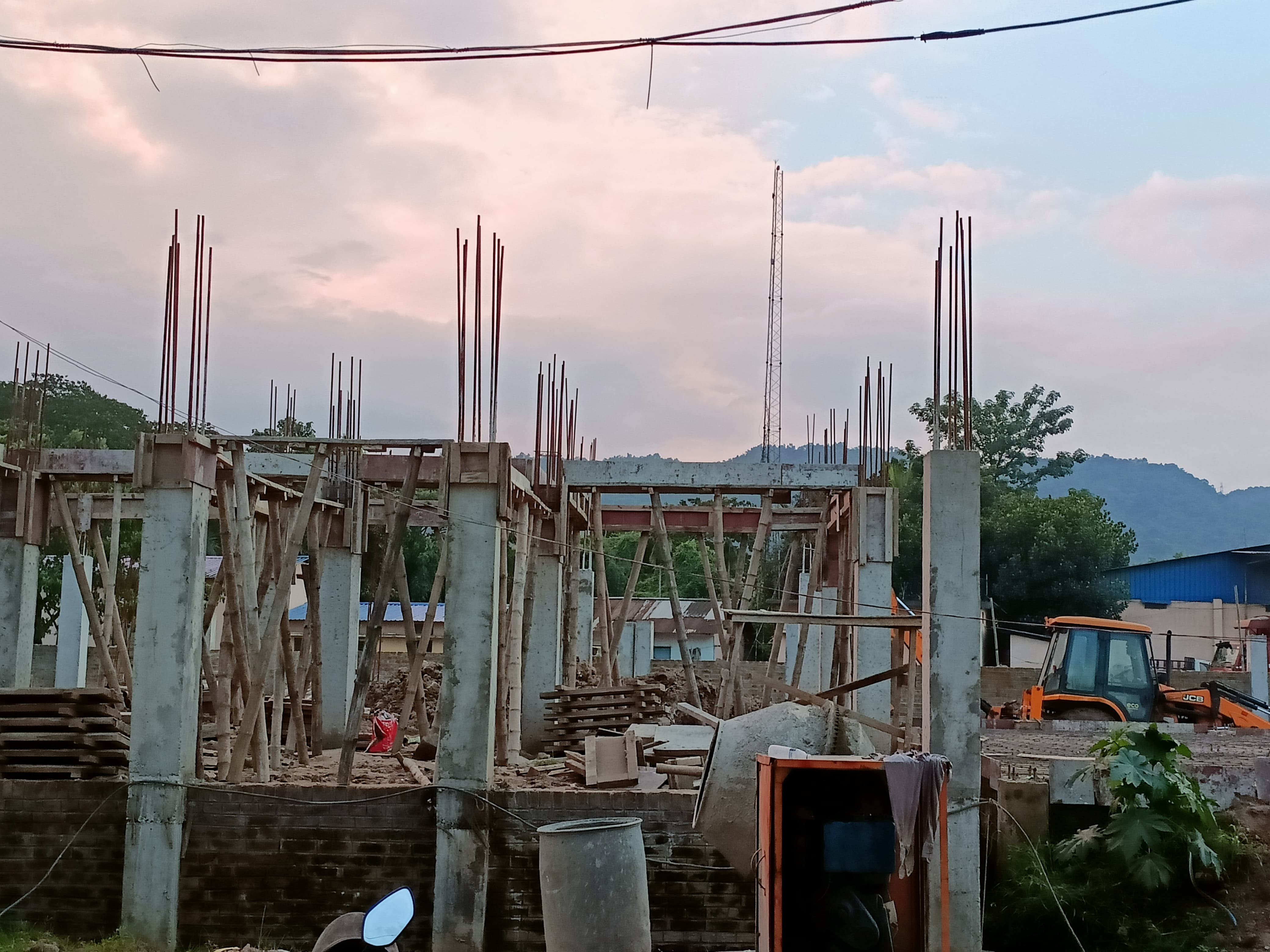 Asthalakshmi Haat under construction
Asthalakshmi Haat under construction
BNE: Speaking of yarn, I’ve heard that NEHHDC offers a 15% subsidy to weavers who buy from you. Can you elaborate on that?NEHHDC MD: Our "हर घर धागा" initiative provides a 10% to 15% subsidy on yarn for weavers. We supply yarn directly to their homes, reducing the need for long-distance travel. We also offer a mobile app for easy online ordering and prompt delivery.
In addition to convenience, we also focus on controlling the price. This program not only lowers the cost of yarn—pricing it around ₹85 to ₹90 compared to ₹100 in local markets—but also saves weavers time and effort, enhancing their productivity.
BNE: In terms of technological advancements, you mentioned the app for purchasing yarns and the implementation of QR codes. Can you elaborate on the progress?
NEHHDC MD: The QR code initiative is already underway, with over 500 devices deployed and more on the way. This system helps weavers tackle two major issues. First, it combats competition from power looms by ensuring the authenticity of handloom products, helping maintain their premium market value. Second, it enhances traceability, crucial for the export market, by providing detailed information about the product’s origin and materials. This development is expected to benefit around 10,000 weavers nationwide.
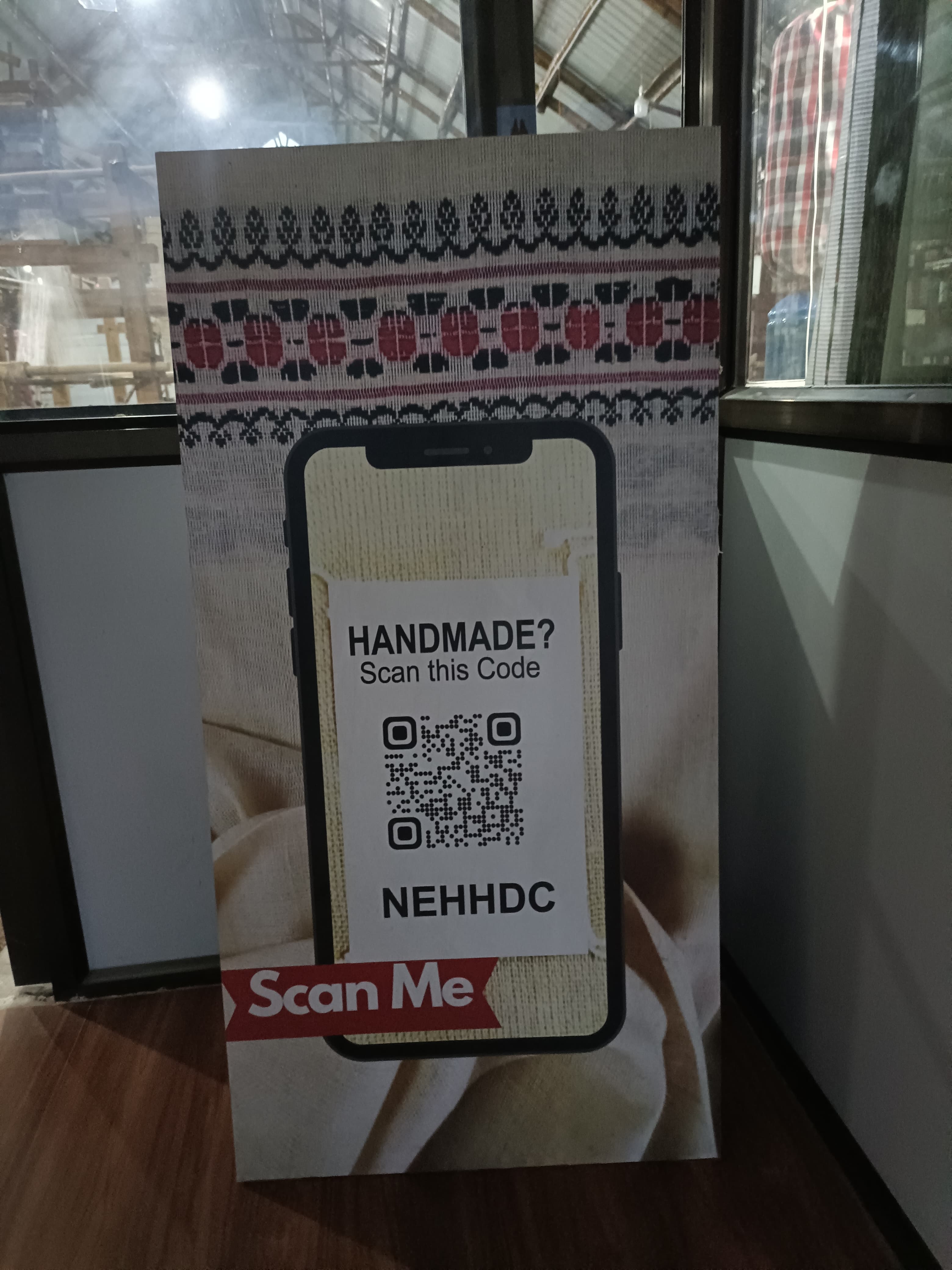
BNE: Could you explain the concept and benefits of the smart looms you mentioned?
NEHHDC MD: Smart looms use IoT devices to enhance productivity by automating pre-loom processes. While weaving remains manual, these looms collect data via sensors and transmit it to the cloud, making them "smart." They can produce a variety of products like gamosas, shawls, Mekhelas, and sarees. Each product is tagged with a QR code that links to a video detailing its production.
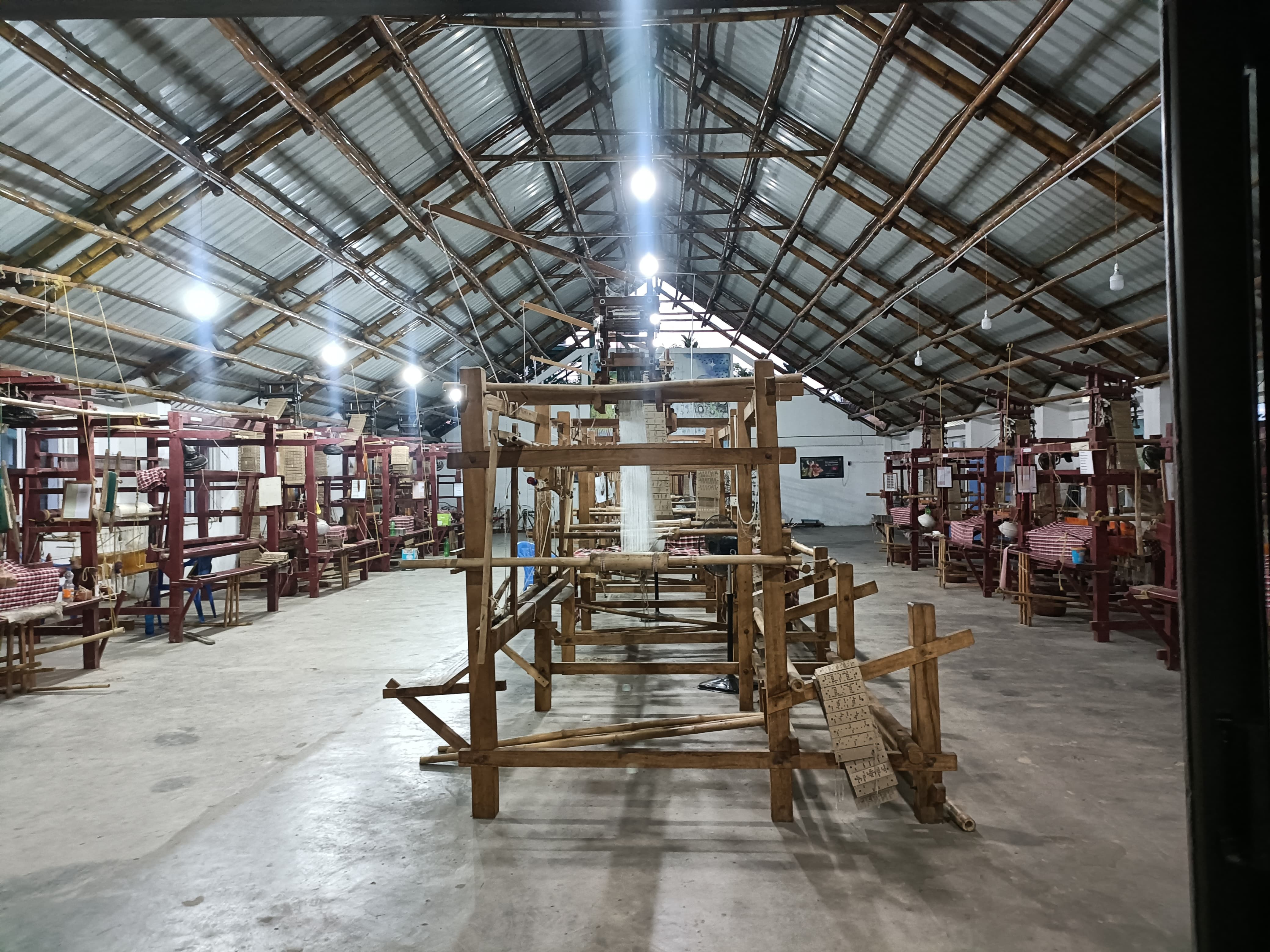 Smart looms
Smart looms
BNE: Will the textile laboratory be able to test the authenticity of gamosas as well?
NEHHDC MD: Yes, our laboratory can test a range of materials, including gamosas. We can verify their authenticity by checking parameters such as width, length, and fabric count, which are crucial for maintaining GI tag standards. We are authorized to use the GI tag for gamosas, ensuring compliance with these specific standards.
BNE: Recently, there have been announcements about initiatives like the MoU with Flipkart to support local weavers. Could you elaborate on these efforts?
NEHHDC MD: While collaborations with platforms like Flipkart are important, our main focus is on the government’s ONDC (Open Network for Digital Commerce). Unlike private platforms, ONDC offers broader visibility and reach. We are prioritizing efforts to help weavers integrate with ONDC to enhance their market exposure and opportunities.